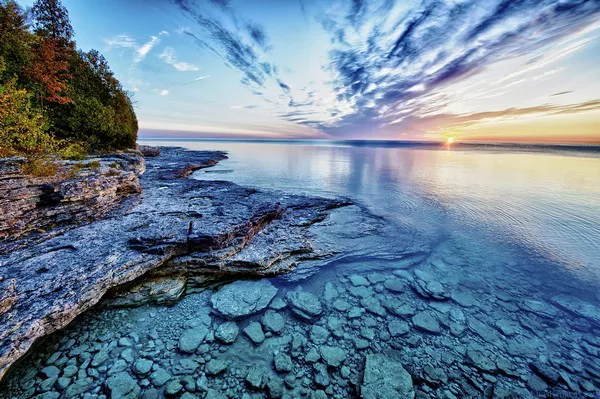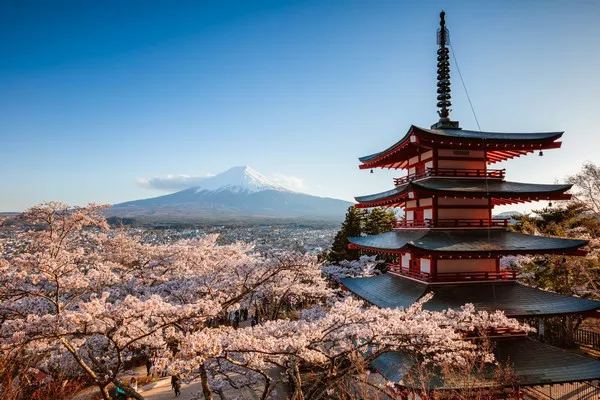Lakes are awe-inspiring natural wonders that hold vast amounts of the Earth’s fresh water. While many people might measure lakes by surface area, considering their volume offers a deeper understanding of their magnitude and significance. This article delves into the world’s ten largest lakes by volume, exploring their unique features, ecological importance, and the diverse life they support.
10 Largest Lakes in the World by Volume
1. Caspian Sea
Volume: 78,200 cubic kilometers
Despite its name, the Caspian Sea is the world’s largest enclosed inland water body, classified as a lake due to its isolation from the world ocean. Straddling Europe and Asia, it is bordered by Russia, Kazakhstan, Turkmenistan, Iran, and Azerbaijan.
Key Features:
Salinity: The Caspian Sea is brackish, with salinity levels varying from north to south.
Biodiversity: It is home to unique species such as the Caspian seal and sturgeon, the latter providing the famous Caspian caviar.
Economic Importance: The lake is rich in oil and natural gas resources, making it economically significant for bordering countries.
Environmental Concerns:
Pollution: Industrial and agricultural runoff, as well as oil extraction, have led to significant pollution.
Water Level Fluctuations: Natural and anthropogenic factors cause drastic water level changes, affecting local ecosystems and human settlements.
See Also: Top 10 Salt Lakes in the World
2. Lake Baikal
Volume: 23,600 cubic kilometers
Located in Siberia, Russia, Lake Baikal is the deepest and oldest freshwater lake in the world, holding about 20% of the Earth’s unfrozen freshwater.
Key Features:
Depth: At 1,642 meters, it is the world’s deepest lake.
Biodiversity: Home to over 1,700 species of plants and animals, two-thirds of which are endemic, including the Baikal seal.
Clarity: Known for its crystal-clear waters, visibility can reach depths of 40 meters.
Environmental Concerns:
Pollution: Industrial activities and untreated wastewater discharge pose significant threats.
Climate Change: Warming temperatures affect ice cover and water quality, impacting endemic species.
3. Lake Tanganyika
Volume: 18,900 cubic kilometers
Lake Tanganyika, shared by Burundi, Democratic Republic of the Congo, Tanzania, and Zambia, is the world’s second deepest and the longest freshwater lake.
Key Features:
Depth: With a maximum depth of 1,470 meters, it is one of the deepest lakes.
Biodiversity: It supports a unique ecosystem with over 300 species of fish, most of which are endemic.
Geological Significance: Formed in the East African Rift, it offers insights into geological and evolutionary processes.
Environmental Concerns:
Pollution: Agricultural runoff and industrial pollution threaten water quality.
Overfishing: Unsustainable fishing practices deplete fish populations, affecting biodiversity and local livelihoods.
4. Lake Superior
Volume: 12,100 cubic kilometers
Lake Superior, the largest of North America’s Great Lakes, borders the United States and Canada. It is the largest freshwater lake by surface area and the third largest by volume.
Key Features:
Surface Area: Spanning 82,100 square kilometers, it is the world’s largest freshwater lake by surface area.
Clarity: Known for its clear, cold waters, with an average depth of 147 meters.
Recreation: Popular for recreational activities such as boating, fishing, and hiking.
Environmental Concerns:
Pollution: Historical industrial activities have left legacy pollutants such as mercury and PCBs.
Invasive Species: Non-native species like zebra mussels disrupt local ecosystems.
5. Lake Malawi (Lake Nyasa)
Volume: 8,400 cubic kilometers
Lake Malawi, also known as Lake Nyasa, lies between Malawi, Mozambique, and Tanzania. It is renowned for its vibrant fish diversity, particularly cichlids.
Key Features:
Biodiversity: Hosts over 1,000 species of fish, with many endemic species, making it a biodiversity hotspot.
Depth: Reaches a maximum depth of 706 meters.
Clear Waters: Known for its crystal-clear waters and beautiful landscapes.
Environmental Concerns:
Pollution: Increasing human activities and deforestation lead to pollution and sedimentation.
Overfishing: Threatens the lake’s rich fish biodiversity and the livelihoods of local communities.
6. Lake Vostok
Volume: 5,400 cubic kilometers
Lake Vostok, hidden beneath Antarctica’s ice, is one of the largest subglacial lakes in the world. Discovered relatively recently, it remains a subject of intense scientific interest.
Key Features:
Isolation: Covered by approximately 4 kilometers of ice, it has been isolated for millions of years.
Unique Ecosystem: Potentially harbors ancient microbial life, providing insights into life in extreme conditions.
Scientific Research: Studying Lake Vostok can enhance our understanding of subglacial environments and climate history.
Environmental Concerns:
Contamination: Drilling to access the lake risks contaminating its pristine waters.
Climate Change: Warming temperatures may impact the stability of the ice cover.
7. Lake Michigan
Volume: 4,918 cubic kilometers
Lake Michigan, entirely within the United States, is one of the Great Lakes and the only one located entirely within one country.
Key Features:
Surface Area: Covers 58,000 square kilometers, making it the third-largest of the Great Lakes by surface area.
Tourism: Major cities like Chicago and Milwaukee lie on its shores, contributing to significant recreational and economic activity.
Diverse Ecosystem: Supports a rich array of fish species and other wildlife.
Environmental Concerns:
Pollution: Urban runoff and industrial discharges affect water quality.
Invasive Species: Species like the sea lamprey and alewife disrupt native ecosystems.
8. Lake Huron
Volume: 3,540 cubic kilometers
Lake Huron, shared by the United States and Canada, is one of the five Great Lakes of North America and is noted for its scenic beauty and large archipelago.
Key Features:
Surface Area: Encompasses 59,600 square kilometers, making it the second-largest Great Lake by surface area.
Georgian Bay: Contains the Georgian Bay, often referred to as the “sixth Great Lake” due to its size and distinct ecological characteristics.
Recreation: Offers numerous recreational opportunities, including boating, fishing, and tourism.
Environmental Concerns:
Pollution: Affected by agricultural runoff, industrial pollution, and urbanization.
Invasive Species: Invasive mussels and other species pose significant ecological challenges.
9. Great Bear Lake
Volume: 2,236 cubic kilometers
Great Bear Lake, located in the Northwest Territories of Canada, is the largest lake entirely within Canada and the fourth-largest in North America.
Key Features:
Surface Area: Covers 31,153 square kilometers.
Pristine Waters: Known for its clear, cold waters and remote wilderness.
Fish Diversity: Supports a variety of fish species, including lake trout and arctic grayling.
Environmental Concerns:
Mining: Potential threats from nearby mining activities.
Climate Change: Warming temperatures could affect ice cover and water quality.
10. Great Slave Lake
Volume: 2,088 cubic kilometers
Great Slave Lake, also located in the Northwest Territories of Canada, is the deepest lake in North America and the second-largest in Canada.
Key Features:
Depth: Reaches a maximum depth of 614 meters.
Surface Area: Spans 28,568 square kilometers.
Cultural Significance: Holds significant cultural and historical importance for Indigenous peoples in the region.
Environmental Concerns:
Pollution: Risks from industrial activities and urban development.
Climate Change: Impact on ice cover and water levels, affecting local communities and ecosystems.
See Also: Top 11 Countries with the Most Lakes in the World
Conclusion
The world’s largest lakes by volume are not only immense reservoirs of fresh water but also vital ecosystems teeming with life and serving as crucial resources for millions of people. Each lake possesses unique characteristics that define its ecological, economic, and cultural importance. However, these magnificent bodies of water face numerous environmental challenges, from pollution and invasive species to climate change and overexploitation. Protecting and conserving these vital natural resources requires concerted global efforts and sustainable practices to ensure their health and longevity for future generations.
Understanding the sheer volume and ecological significance of these lakes can deepen our appreciation for their role in the Earth’s hydrological system and inspire more effective conservation strategies. By recognizing the delicate balance within these vast aquatic environments, we can better advocate for policies and practices that safeguard their beauty and bounty for years to come.
You Might Be Interested In:



























